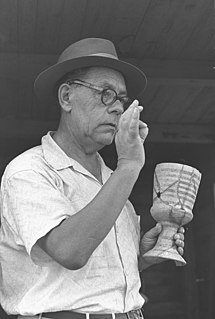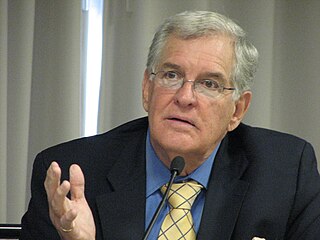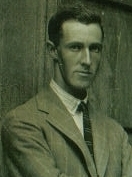Related Research Articles

The Dead Sea Scrolls are ancient Jewish and Hebrew religious manuscripts discovered in 1946/47 at the Qumran Caves in what was then Mandatory Palestine, near Ein Feshkha in the West Bank, on the northern shore of the Dead Sea. Dating from the 3rd century BCE to the 1st century CE, the Dead Sea Scrolls are considered to be a keystone in the history of archaeology with great historical, religious, and linguistic significance because they include the oldest surviving manuscripts of entire books later included in the biblical canons, along with deuterocanonical and extra-biblical manuscripts which preserve evidence of the diversity of religious thought in late Second Temple Judaism. At the same time they cast new light on the emergence of Christianity and of Rabbinic Judaism. Most of the scrolls are held by the State of Israel in the Shrine of the Book at the Israel Museum, but some of them had been taken to Jordan and are now displayed at The Jordan Museum in Amman. Ownership of the scrolls, however, is claimed by the State of Palestine.

Qumran is an archaeological site in the West Bank managed by Israel's Qumran National Park. It is located on a dry marl plateau about 1.5 km (1 mi) from the northwestern shore of the Dead Sea, near the Israeli settlement and kibbutz of Kalya.

Lawrence Harvey Schiffman is a professor at New York University ; he was formerly Vice-Provost of Undergraduate Education at Yeshiva University and Professor of Jewish Studies. He had previously been Chair of New York University's Skirball Department of Hebrew and Judaic Studies and served as the Ethel and Irvin A. Edelman Professor in Hebrew and Judaic Studies at New York University (NYU). He is currently the Judge Abraham Lieberman Professor of Hebrew and Judaic Studies at New York University and Director of the Global Institute for Advanced Research in Jewish Studies. He is a specialist in the Dead Sea Scrolls, Judaism in Late Antiquity, the history of Jewish law, and Talmudic literature.
The year 1949 in archaeology involved some significant events.

Roland Guérin de Vaux was a French Dominican priest who led the Catholic team that initially worked on the Dead Sea Scrolls. He was the director of the Ecole Biblique, a French Catholic Theological School in East Jerusalem, and he was charged with overseeing research on the scrolls. His team excavated the ancient site of Khirbet Qumran (1951–1956) as well as several caves near Qumran northwest of the Dead Sea. The excavations were led by Ibrahim El-Assouli, caretaker of the Palestine Archaeological Museum, or what came to be known as the Rockefeller Museum in Jerusalem.

Eleazar Lipa Sukenik was an Israeli archaeologist and professor at the Hebrew University of Jerusalem. He is best known for helping establish the Department of Archaeology at the Hebrew University and being one of the first academics to recognise the age and importance of the Dead Sea Scrolls. He also oversaw the uncovering of the Third Wall of ancient Jerusalem. He also was the director of the Museum of Jewish Antiquities at the Hebrew University.

Józef Tadeusz Milik was a Polish biblical scholar and a Catholic priest, researcher of the Dead Sea Scrolls (DSS) through the deserts of Judea/Jordan, and translator and editor of the Book of Enoch in Aramaic (fragments).

Robert Eisenman is an American biblical scholar, historian, archaeologist, and poet. He is currently professor of Middle East religions, archaeology, and Islamic law and director of the Institute for the Study of Judaeo-Christian Origins at California State University Long Beach.

James Hamilton Charlesworth was the George L. Collord Professor of New Testament Language and Literature until January 17, 2019, and Director of the Dead Sea Scrolls Project at the Princeton Theological Seminary. His research interests include the Apocrypha and Pseudepigrapha of the Hebrew and Christian Bibles, the Dead Sea Scrolls, Josephus, the Historical Jesus, the Gospel of John, and the Revelation of John.
Discoveries in the Judaean Desert (DJD) is the official 40-volume publication that serves as the editio princeps for the Dead Sea Scrolls. It is published by Oxford University Press.

Jodi Magness is an archaeologist, orientalist and scholar of religion. She serves as the Kenan Distinguished Professor for Teaching Excellence in Early Judaism at the University of North Carolina at Chapel Hill. She previously taught at Tufts University.

Ein Feshkha or Ain Al-Fashka is a 2,500 ha nature reserve and archaeological site on the north-western shore of the Dead Sea, about 3 km south of Qumran in the West Bank. 'Ain el-Feshkhah is located just north of the headland Râs Feshkhah, the "headland of Feshkhah". Within the reserve is a group of springs of brackish water. The nature reserve consists of an open section with pools of mineral water for bathing surrounded by high foliage and a section that is closed to visitors to protect the native flora and fauna.

Qumran Caves are a series of caves, some natural, some artificial, found around the archaeological site of Qumran in the Judaean Desert of the West Bank. It is in these caves that the Dead Sea Scrolls were discovered.
The Qumran cemetery is in eastern Qumran in the West Bank, part of Palestinian area which is under Israeli occupation. It is a large area leading to a descent from which four finger-like ridges point eastward. On these ridges more tombs are located. The current estimate of tombs in the cemetery is over 1100. The largest section, that on the plateau proper, has two east-west paths which divide it into three parts. There are also two small cemeteries near Qumran, one ten minutes' walk north of the main cemetery and one to the south, on the other side of Wadi Qumran.
Ernest-Marie Laperrousaz was a French historian and archaeologist. As an archaeologist he worked at Qumran and Masada. He has published numerous books including works on Qumran and the context of the Dead Sea Scrolls.

Gerald Lankester Harding was a British archaeologist who was the director of the Department of Antiquities of Jordan from 1936 to 1956. His tenure spanned the period in which the Dead Sea Scrolls were discovered and brought to public awareness. Without his efforts many of the scrolls might have disappeared into private collections never to be seen again.

Wadi Murabba'at, also known as Nahal Darga, is a ravine cut by a seasonal stream which runs from the Judean desert east of Bethlehem past the Herodium down to the Dead Sea 18 km south of Khirbet Qumran in the West Bank. It was here in caves that Jewish fighters hid out during the Bar Kochba revolt, leaving behind documents that include some letters signed by Simon Bar Kochba.
Jean-Baptiste Humbert is a French archaeologist who has excavated in Jordan, Palestine, Iran and Israel. He is of the order of the Dominicans and is director of the Archaeology Laboratory of the École Biblique in Jerusalem. He was responsible for publishing the notes and materials from the excavations of Qumran, which were under the direction of Roland de Vaux.

The W. F. Albright Institute of Archaeological Research (AIAR), is an archaeological research institution located in East Jerusalem. It is the oldest American research center for ancient Near Eastern studies in the Middle East. Founded in 1900 as the American School of Oriental Research, it was renamed in 1970 after its most distinguished director and the father of Biblical archaeology, William F. Albright. Its mission is to develop and disseminate scholarly knowledge of the literature, history, and culture of the Near East, as well as the study of civilization from pre-history to the early Islamic period.
Abbé Jean Starcky was a French priest who was one of the early editors of the Dead Sea Scrolls. He studied at the Pontifical Biblical Institute in Rome and the École Biblique et Archéologique Française in Jerusalem. As a specialist in Palmyrene Aramaic and Nabataean texts he joined the international Dead Sea Scrolls team in January 1954.
References
- de Vaux, Roland, Archaeology and the Dead Sea Scrolls (Oxford: Oxford University Press, 1973). English translation from the French.
- Steckoll, Solomon H., "Marginal Notes on Qumran", Revue de Qumran 7 (1969) 33–40.
- Steckoll, Solomon H., "Preliminary Excavation Report in the Qumran Cemetery", Revue de Qumran 6 (1968) 323–344.
- Haas, N., and Nathan, H., "Anthropological Survey on the Human Skeletal Remains from Qumran", Revue de Qumran 6 (1968) 345–352.
Unseen [4]
- Steckoll, Solomon H., "An Inkwell from Qumran", Mada´ 13 (1969) 260–261. [Hebrew]
- Steckoll, Solomon H., "Investigation of the Inks Used in Writing the Dead Sea Scrolls", Nature 220 (1968) 91–92.